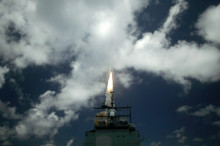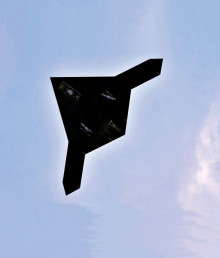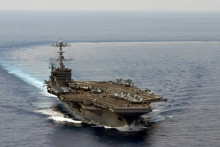
Reading the daily headlines offers only a piecemeal understanding of the threats to U.S. National security. Said another way, there is far more heat than light. We’ll try to light a candle.
As a result of globalization and the proliferation of new technology, the United States is facing challenges on a global scale. At the 2015 Reagan National Defense Forum, Secretary of Defense, Ashton Carter, outlined the “4+1 construct. This new way of looking at threats to our nations focuses on “four contingencies and one condition.”
The “contingencies” include, China and Russia, the high end threats, and Iran and North Korea, lower end threats but with great instability. The “condition” is the long-term fight against global terrorism.
This is a completely new way that the United States looks at these threats to our national security. For several generations, the Cold War and a fight against the Soviet Union dominated our national security calculus. While there were other threats the United States had to deal with, they were all viewed as “lesser included subsets” of the Soviet threat. In other words, if we had the doctrine, people and equipment to take on the Soviets, we could deal with these lesser threats.
That is no longer the case, and that is why the new “4+1” construct is so important. We face dramatically different strategic, operational and tactical challenges from the “four contingencies and one condition.” And in the year-plus since this construct was announced, these threats have taken on worrisome changes – all for the worse.
Stay tuned to this blog over the next several weeks to learn more about each of these threats to our national security.

Few writers have helped readers make sense of geography better than Robert Kaplan. In over a dozen books, such as the best-selling The Revenge of Geography, Kaplan has made geography make sense and tied it to history. He’s done it again in Earning the Rockies. Here is part of what Jonathan Rauch shared in his review in The New York Times.
For all the turbulent change swirling about us now, America was and remains the product of an exceptional geography. North America has more miles of navigable inland waterways than much of the rest of the world combined. Better still, its rivers run diagonally rather than (as in Russia) north and south, forming an ideal network for internal communication and trade. Moreover, America’s continental span and rich resource base shield it from external threat and dependency. Thus the United States is uniquely blessed by geography to form and sustain a cohesive continental union. Union is not the same as unity, but it’s a good start.
America’s geographical and hydrological blessings ramify not only inward but also outward. “The United States is not a normal country: Its geographic bounty gave it the possibility of becoming a world power, and with that power it has developed longstanding obligations, which, on account of its continued economic and social dynamism relative to other powers, it keeps,” Kaplan writes. “We are,” he says (his italics), “fated to lead.” For a host of reasons, ranging from geography to culture, no other country can play the same role.
Read this intriguing article here.

Ballistic missile defense (BMD) is one of the most important missions for the United States’ military – and it is one that is growing in importance – with rouge nations such as North Korea and Iran possessing ballistic missiles armed with weapons of mass destruction.
The U.S. Navy’s contribution to U.S. BMD is based on the Aegis weapon system and has been on patrol in guided-missile cruisers and destroyers since 2004. Aegis BMD has grown in importance based on its proven performance as well as its long-term potential.
For years, the U.S. Navy’s contribution to U.S. BMD was secondary to many other systems. Today, the U.S. Navy is “in the van” as we describe in our article in the US Naval Institute Proceedings.

One of the most rapidly growing areas of innovative technology adoption involves autonomous systems. The U.S. military’s use of these systems – especially armed autonomous systems – is not only changing the face of modern warfare, but is also altering the process of decision-making in combat operations. These systems are evolving rapidly to deliver enhanced capability to the warfighter and seemed poised to deliver the next “revolution in military affairs.” However, there are increasing concerns regarding the degree of autonomy these systems—especially armed autonomous systems—should have. Until these issues are addressed, military autonomous systems may not reach their full potential.
While DoD officials have issued comprehensive guidance regarding the need to ensure that autonomous systems have operator oversight – especially for lethal autonomous systems, that has not sufficiently mitigated public concerns that the U.S. military will unleash lethal autonomous systems that may do unintended harm. In the face of rapid advances in artificial intelligence, the need to contend with enemy systems that operate at machine speeds, and the growing concerns expressed in popular culture about the way machines might turn on their human masters, these concerns have grown. In short, will HAL try to kill us?
Read more of my Defense Media Network article about the possible dark side of autonomous systems here

Every four years, the National Intelligence Council (NIC) releases their comprehensive report forecasting global trends that have a major impact on our world. The current publication is, “Global Trends 2030: Alternative Worlds.” In shorthand – GT2030. Global Trends 2030 helps us have an informed and well-nuanced view of the future. This is not as easy as it sounds, for, as John Maynard Keynes famously said in 1937: “The idea of the future being different from the present is so repugnant to our conventional modes of thought and behavior that we, most of us, offer a great resistance to acting on it in practice.”
NIC has been in existence for over three decades and represents the primary way the U.S. intelligence community (IC) communicates in the unclassified realm. Initially a “wholly-owned subsidiary” of the Central Intelligence Agency (CIA), the NIC now works directly for the director of national intelligence and presents the collective research and analysis of the entire IC, an enterprise comprising 16 agencies with a combined budget of well over $80 billion. In a sentence: There is no more comprehensive analysis of future trends available anywhere, at any price. It’s not an overstatement to say this 160-page document represents the most definitive analytical look at the future security environment.
Read a detailed look at this publication in my post on the Defense Media Network website here.

Last week, we posted information about the existential threat posed by Chinese ballistic missiles. It is a threat that bedevils United States national security professionals who must devise an effective counter to this real – and growing – threat. Here is part of what I posted on the Defense Media Network website:
Dealing with just the multi-headed hydra of the Chinese ballistic missile threat is a complex issue that belies a complete treatment here. Clearly, in the case of dealing with the threat the DF-21D poses for U.S. carrier strike groups that operate in the Western Pacific, a large part of the response must be naval. Add to this the fact that, as pointed out above, China’s decision to deploy the DF-21D on mobile launching systems makes it less likely that the missile can be destroyed before it is launched.
Without putting too fine of a point on it, this compels U.S. Navy carrier strike groups (CSGs) – as well as other battle formations such as expeditionary strike groups – to contend with this missile in the maritime arena. It is for this reason that the nation and the Navy are outfitting existing and emerging Aegis cruisers and destroyers, which will provide the lion’s share of the naval defense against ballistic missiles, with Aegis BMD at an accelerated pace. Clearly, the flexibility and mobility of these platforms makes them not only vital – but indispensable – assets to defend these strike groups.
Read more about the United States journey to provide world-class missile defense – and especially how the U.S. Navy is leading the way in our defense against China’s ballistic missiles – in my series of articles on missile defense on the Defense Media Network’s website here.

The recent presidential election campaign highlighted many issues between the United States and China. And beyond this campaign, there are many issues that the world’s two superpowers must resolve. But often lost in this dialogue is the clear and present danger presented by China’s ballistic missiles. We hear a lot about North Korea’s missile efforts, but not China’s.
Clearly, China’s ballistic missiles represent just one arrow in a quiver of offensive and defensive weapons in China’s arsenal. And just as there is danger in attempting to address this capability in isolation, it is also not especially useful examining U.S. capabilities to defend against these missiles in a stovepiped manner. In any conflict – and even in the context of saber-rattling – it is important to examine the total force each nation brings to the table today, and perhaps more importantly, in the future.
That said, it is possible to drill down and examine this one capability in detail as a means of understanding not only China’s strategic intent today, but also its likely course in the future, and perhaps most importantly, the measures the United States it taking to enable the U.S. military to address this threat today and tomorrow. There is a vast body of work in this area, and reading just some of it will put this threat in stark relief.
Read more about the United States journey to provide world-class missile defense – and especially defense against China’s ballistic missiles – in my series of articles on missile defense on the Defense Media Network’s website here.

Last month, we posted about missile defense and the U.S. Navy’s lead role in dealing with this existential threat to our nation and our allies. We continue that theme here about the ongoing evolution of this critical pillar in our national defense. Whether it is North Korean or Iranian ballistic missiles, the threat is here today and it is growing.
The National Security Strategy underscored the most important functions of the national government:
This administration has no greater responsibility than the safety and security of the American people. And there is no greater threat to the American people then weapons of mass destruction, particularly the danger posed by the pursuit of nuclear weapons by violent extremists and their proliferation to additional states.
Today, as described earlier, the global ballistic missile threat has morphed from massed numbers of ICBMs unleashed by a peer competitor to the threat of accidental release of a ballistic missile or the threat of one fired by a so-called rogue nation or a national or international terrorist group. And the threat of what these ballistic missiles could carry – from solely nuclear WMD to chemical and biological WMD – has multiplied the number of nations that can combine these capabilities to threaten the United States, forward-deployed forces, allies, and friends.
Read more about the United States journey to provide world-class missile defense in my series of articles on missile defense on the Defense Media Network’s website here

We posted a number of stories under National Security that mined the National Intelligence Council’s capstone publication: Global Trends 2030: Alternative Worlds. In our last few posts we looked at three of those alternative worlds. This final Global Trends 2030 post discusses the final alternative world, Stalled Engines.
Without putting too fine a point on it, the Nonstate World scenario represents what is arguably the most uncertain and unpredictable scenario presented in Global Trends 2030: Alternative Worlds. While the future worlds presented in the other three scenarios presented in GT2030 have their own uncertainties and conundrums, the Nonstate World scenario envisions a world where it is hard enough to guess, let alone “know,” what will transpire circa 2030.
Global governance institutions that do not adapt to the more diverse and widespread distribution of power are also less likely to be successful. Multinational businesses, IT communications firms, international scientists, NGOs, and groups that are used to cooperating across borders thrive in this hyper-globalized world where expertise, influence, and agility count for more than “weight” or “position” in this scenario. Private capital and philanthropy matter more, for example, than official development assistance. Social media, mobile communications, and big data are key components, underlying and facilitating cooperation among nonstate actors and with governments.
This is a “patchwork” and uneven world. Some global problems get solved because networks manage to coalesce, and cooperation exists across state and nonstate divides. In other cases, nonstate actors may try to deal with a challenge, but they are stymied because of opposition from major powers who, as noted above, often consider these NGOs, multinational businesses, academic institutions, and wealthy individuals as threats to their authority. This world may be shaping our future today.
Read the entire article here on the Defense Media Network website and consider what our world may look like in the future – especially if “Non-State World” prevails.

There’s little question that we’re a success-oriented society. Many carry around famed football coach Vince Lombardi’s mantra, “Winning isn’t everything, it’s the only thing” as a personal mantra.
And in American society today, with our basic needs fulfilled for the majority of our citizens, we turn to “winning” as our measure of success. That covers the spectrum from getting our kids into the best schools, ensuring we have the best lawn on the block and being almost perfect in every way. In most aspects of our lives we all but shout, “Failure is not an option!”
Now, two Stanford professors ask us to step back and reconsider and try to accept the fact that it is OK to fail and that there isn’t just one way to deal with tough challenges. Here is part of what Steven Kurutz shared in his short piece, “Life Has Questions. They Have Answers.”
“The two professors claim that you can design an amazing life in the same way that Jonathan Ive designed the iPhone. They say the practices taught in the class and the book can help you (in designing-your-life-speak) “reframe” dysfunctional beliefs that surround life and career decisions and help you “wayfind” in a chaotic world through the adoption of such design tenets as bias-for-action, prototyping and team-building.”
“After nine years of teaching their secrets to future Google product managers and start-up wunderkinds, two designers, Mr. Burnett and Mr. Evans are opening up the curriculum to everyone. “What do I want to be when I grow up?” and “Am I living a meaningful life?” aren’t only subjects for late-night pot-fueled dorm hangouts, the men said.”
You can read the full article that hits the core question, “What do I do with the rest of my one wild and wonderful life?” here










